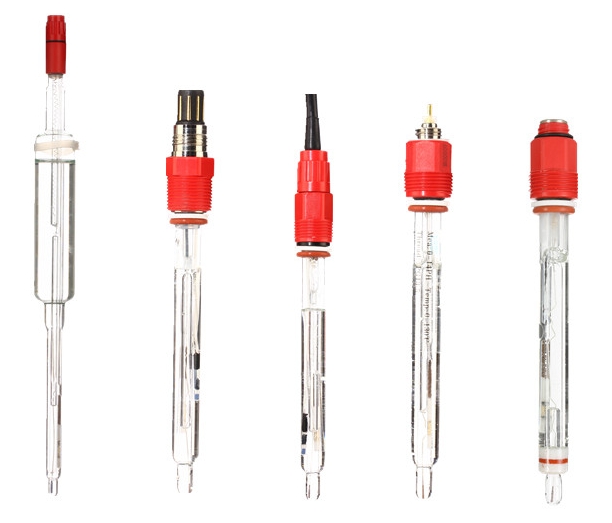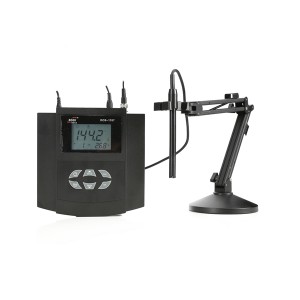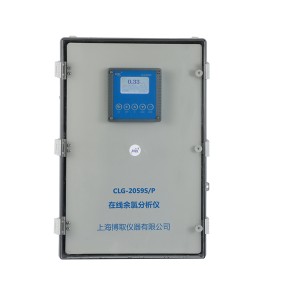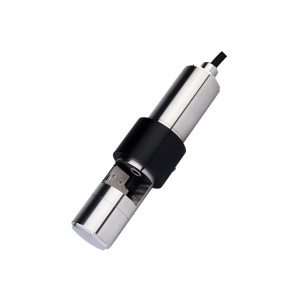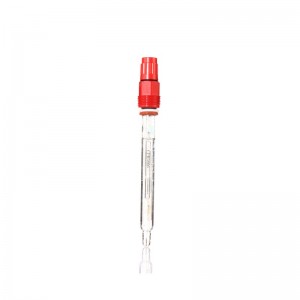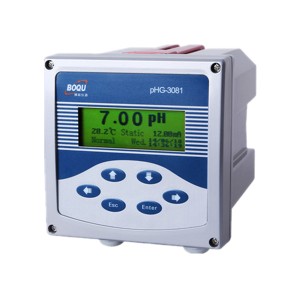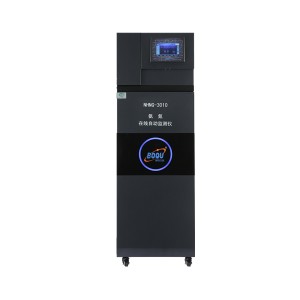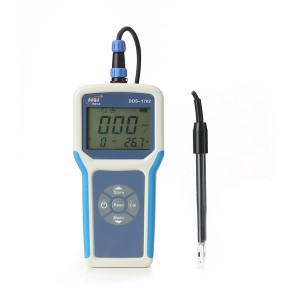In bioprocessing, maintaining precise control of environmental conditions is crucial. The most important of these conditions is pH, which influences the growth and productivity of microorganisms or cells used in various biotechnological applications. To achieve this precise control, bioreactor operators rely on advanced tools and sensors–the most important being the bioreactor pH sensor.
Bioreactor pH Sensor: Basic Principles of pH Measurement
1. Bioreactor pH Sensor: Definition of pH
pH, or “potential of hydrogen,” is a measure of the acidity or alkalinity of a solution. It quantifies the concentration of hydrogen ions (H+) in a given solution and is expressed on a logarithmic scale ranging from 0 to 14, with 7 representing neutrality, values below 7 indicating acidity, and values above 7 indicating alkalinity. In bioprocessing, maintaining a specific pH level is critical for the optimal growth and productivity of microorganisms or cells.
2. Bioreactor pH Sensor: pH Scale
Understanding the pH scale is fundamental to comprehending the significance of pH monitoring. The logarithmic nature of the scale means that a one-unit change represents a tenfold difference in hydrogen ion concentration. This sensitivity makes precise pH control essential in bioreactors, where small deviations can significantly impact the bioprocess.
3. Bioreactor pH Sensor: Importance of pH Monitoring in Bioprocessing
Bioprocessing encompasses various applications, including fermentation, biopharmaceutical production, and wastewater treatment. In each of these processes, maintaining a specific pH range is crucial for controlling enzymatic reactions, microbial growth, and product quality. pH monitoring ensures that the bioreactor environment remains within the desired parameters, optimizing productivity and product yield.
4. Bioreactor pH Sensor: Factors Affecting pH in Bioreactors
Several factors can influence pH levels within bioreactors. These include the addition of acidic or alkaline substances, metabolic byproducts of microorganisms, and changes in temperature. Monitoring and controlling these variables in real time are made possible by pH sensors, which play a pivotal role in bioprocess management.
Bioreactor pH Sensor: Types of pH Sensors
1. Bioreactor pH Sensor: Glass Electrode pH Sensors
Glass electrode pH sensors are one of the most common types used in bioprocessing. They consist of a glass membrane that responds to changes in hydrogen ion concentration. These sensors are renowned for their accuracy and reliability, making them a preferred choice for critical bioreactor applications.
2. Bioreactor pH Sensor: ISFET (Ion-Selective Field-Effect Transistor) pH Sensors
ISFET pH sensors are solid-state devices that detect pH changes by measuring the voltage across a silicon chip. They offer advantages such as durability and suitability for single-use applications, making them a versatile choice in bioprocessing.
3. Bioreactor pH Sensor: Reference Electrodes
Reference electrodes are an essential component of pH sensors. They provide a stable reference potential against which the glass electrode measures pH. The choice of reference electrode can impact sensor performance, and selecting the right combination is crucial for accurate pH measurement.
4. Bioreactor pH Sensor: Comparison of Sensor Types
Choosing the right pH sensor for a bioprocessing application depends on factors such as accuracy, durability, and compatibility with the specific process requirements. A comparison of different sensor types will help bioprocess professionals make informed decisions when selecting pH monitoring equipment.
Bioreactor pH Sensor: Bioreactor pH Sensor Design
1. Bioreactor pH Sensor: Sensor Housing
The sensor housing is the outer shell that protects the internal components from the harsh environment within a bioreactor. When selecting materials for the housing, it is essential to consider factors such as chemical compatibility, durability, and ease of cleaning. Stainless steel is a commonly used material due to its resistance to corrosion and robustness. The shape and size of the housing should be designed to fit the specific bioreactor’s requirements while ensuring ease of installation and maintenance.
2. Bioreactor pH Sensor: Sensing Element
The heart of a pH sensor is its sensing element. Bioreactor pH sensors typically employ either a glass electrode or an Ion-Sensitive Field Effect Transistor (ISFET) as the sensing element. Glass electrodes are known for their accuracy and reliability, while ISFETs offer advantages in terms of miniaturization and robustness. The choice between these two largely depends on the application’s requirements. Selecting the appropriate electrolyte solution within the sensing element is crucial for maintaining electrode performance over time.
3. Bioreactor pH Sensor: Reference Electrode
A reference electrode is essential for pH measurement as it provides a stable reference point. There are various types of reference electrodes, including Ag/AgCl and Calomel electrodes. Maintenance considerations involve keeping the reference electrode junction clean and ensuring the reference solution remains stable. Regularly checking and replenishing the reference solution is necessary to maintain accuracy.
4. Bioreactor pH Sensor: Junction Design
The junction design of a pH sensor is critical for maintaining the flow of ions between the process solution and the reference electrode. This design should prevent clogging and minimize drift in readings. The choice of junction material and its configuration plays a significant role in the sensor’s overall performance.
6. Bioreactor pH Sensor: Calibration Procedures
Calibration is a crucial step in ensuring accurate pH measurements. pH sensors should be calibrated regularly using standard buffer solutions with known pH values. The calibration procedures should be followed meticulously, and the calibration records should be maintained for traceability and quality control purposes.
Bioreactor pH Sensor: Installation and Integration
1. Bioreactor pH Sensor: Placement within the Bioreactor
Proper placement of pH sensors within the bioreactor is essential to obtain representative measurements. Sensors should be strategically located to monitor pH variations throughout the vessel. The installation should also consider factors such as sensor orientation and distance from the agitator.
2. Bioreactor pH Sensor: Connection to Control Systems
Bioreactor pH sensors must be integrated into the control system of the bioreactor. This involves connecting the sensor to a transmitter or controller that can interpret the pH readings and make necessary adjustments to maintain the desired pH level.
3. Bioreactor pH Sensor: Cable and Connector Considerations
Selecting the right cables and connectors is crucial for reliable data transmission and longevity. Cables should be designed to withstand the harsh conditions within the bioreactor, and connectors should be corrosion-resistant to maintain a stable electrical connection.
Bioreactor pH Sensor: Calibration and Maintenance
1. Bioreactor pH Sensor: Calibration Procedures
Regular calibration is essential to ensure accurate pH measurements. The frequency of calibration depends on factors such as the sensor’s stability and the criticality of pH control in the process. It is recommended to follow the manufacturer’s guidelines for calibration procedures.
2. Bioreactor pH Sensor: Frequency of Calibration
The frequency of calibration should be determined based on the specific application and the sensor’s stability. Some sensors may require more frequent calibration, while others can maintain accuracy over longer periods.
3. Bioreactor pH Sensor: Cleaning and Maintenance
Proper cleaning and maintenance are essential for sensor longevity and accuracy. Cleaning procedures should be performed regularly to remove any biofilm or deposits that may accumulate on the sensor surface. Maintenance should also include checking the reference electrode and junction for signs of wear or contamination.
4. Bioreactor pH Sensor: Troubleshooting Common Issues
Despite proper design and maintenance, pH sensors may encounter issues such as drift, signal noise, or electrode fouling. Troubleshooting procedures should be in place to identify and resolve these issues promptly to minimize process disruptions.
Conclusion
The bioreactor pH sensor is a critical tool in bioprocessing, allowing for precise control of pH levels to optimize microbial growth and product yield. Understanding the basic principles of pH measurement and the various types of pH sensors available empowers bioprocess operators to make informed choices in selecting the most suitable equipment for their applications. With reliable pH sensors from providers like Shanghai BOQU Instrument Co., Ltd., bioprocessing professionals can continue to advance the field of biotechnology and produce high-quality products efficiently.
Post time: Sep-13-2023

